[Back-end menagement] Decommissioning of nuclear power plants BANDI
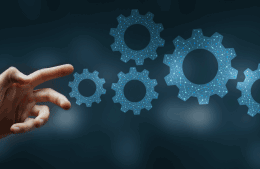
Main reactor type
The reactor, which produces a nuclear reaction and maintains its stability, is an integration of the most advanced technology as it is directly associated with the safety. KEPCO E&C secured the reactor design technology by designing the Hanbit Units 3,4. Subsequently, we have demonstrated our capabilities by conducting R&D on a constant basis to develop more stable and economically viable reactors. As the only company in the world to perform both A/E(Architect Engineering) and NSSS(Nuclear Steam Supply System) design, KEPCO E&C never gets complacent but keep advancing our technology to provide safer and more economical energy.
| Model | OPR1000 | APR1400 | APR+ | Heavy water reactor |
|---|---|---|---|---|
| Period | 1990s | 2000 - 2010s | 2020s | - |
| Capacity | 700 - 1,000 MW | 1,400 MW | 1,500 MW | 700 MW |
| Features |
|
|
|
|
| Performance | Hanul Units 3, 4, 5, 6 Hanbit Units 5, 6 Shin-Kori Units 1, 2 Shin Wolseong Units 1, 2 |
Saeul Units 1, 2, 3, 4 UAE nuclear power plant units 1, 2, 3, 4 Shin-Hanul Units 1, 2 Shin-Hanul Units 3, 4 (under construction) |
- | Wolseong Units 1, 2, 3, 4 |
| Image | 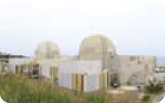 |
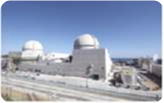 |
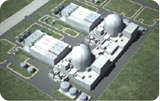 |
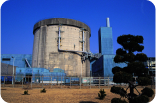 |
OPR1000
OPR1000, which is recognized as one of the safest among 1000MW nuclear power plants under construction globally, secured optimal economic viability and safety by fixing all issues with the preceding units and reflected them through repeated designs of a total of 6 units including the Hanul Units 5,6, Hanbit Units 5,6. It incorporated all the follow-up measures in the aftermath of the U.S. Three Mile Island (TMI) Nuclear Power Plant accident and secured the highest level of safety by applying the concept of severe accident prevention and mitigation. It also applied the principle of redundancy, diversity, independence of safety-related facilities and safe operation in case of failure based on the concept of "Defense in depth". Afterwards, OPR1000 broke away from partial design improvements through repeated construction into comprehensive design improvements, transforming into improved OPR1000 with enhanced technology, economic viability, and international competitiveness. KEPCO E&C has secured a track record of designing 12 OPR1000 type nuclear power plants by applying the improved OPR1000 to Shin Kori Units 1,2 and Shin Wolseong Units 1,2.
APR1400
AAPR1400, a cutting-edge next-generation reactor, was developed by improving OPR100, increasing power generation capacity from 1000MW to 1400MW and extending the renewal period for continuous operation from 40 to 60 years. Its strengths are evaluated to surpass the technological level of the 3rd-generation nuclear power plants developed by advanced countries in nuclear power plants. In particular, to enhance the safety, the APR1400 standard design incorporated the seismic designs to meet all 0.3g seismic requirements in rock and soil conditions in accordance with the concept of comprehensive site. Moreover, the introduction of a quadrant layout design for auxiliary buildings enhanced our capabilities to respond to fire, flood, earthquake, and other external shocks.
Meanwhile, we obtained the EUR(European Utility Requirements) certificate from the EUR organization in November 2017 for the standard design of EU-APR, a modified version of APR1400 designed for export to Europe. In August 2019, we also obtained DC(Design Certification) from the. U.S. NRC(Nuclear Regulatory Commission), raising hopes to export additional nuclear power plants following the UAE nuclear power plants.
APR+
APR+ reactor was developed in accordance with Nu-Tech 2012 established to overcome the restrictions imposed on independent export through complete self-reliance of some core technologies that depended on overseas technologies. Developed by domestic technology, APR+ is a 100% indigenous reactor, cleared of obstacles to export. The development enabled us to secure RCP(Reactor Coolant Pump), MMIS(Man-Machine Interface System), nuclear power plant design core codes, and other key technologies for which we had to be dependent on overseas technology for APR1400. APR+ has also been designed to supply coolant for up to 3 days even if the electricity needed for cooling the reactor is cut off with a sudden shutdown of the reactor.
In addition, while the frequency of a severe accident that causes the reactor core to melt down is below once per 100,000 years for the existing nuclear power plants, it is below once per 1 million years for APR+. The basic design requirements for cyber security of APR+ were determined based on domestic regulatory guidelines to safeguard the safety functions of nuclear power plant control system from malicious cyber attacks.
Major facilities such as the Main Control Room and Remote Control Room, which are the brains of the power plants, are designed to fully protect from large-scale external shocks such as aircraft crashes. With the addition of 16 more fuel rods than APR1400, the diameter of the reactor for APR+ increased by 30cm. Accordingly, APR+ came to have a larger power generation capacity and a higher efficiency. KEPCO E&C also made a great effort to develop technologies for SC structures and multi-modules, a core technology for shortening the construction period, which remained at a limited level of technology. This effort paid off by shortening the construction period by one year compared to the APR1400. Another advantage of APR+ is that, similar to thermal power plants, it can cut back on electricity production output flexibly, enabling it to respond elastically to ever-changing electricity demand.
Heavy water reactor
South Korea has introduced a PHWR(Pressurized Heavy Water Reactor) nuclear power plant in partnership with AECL(Atomic Energy of Canada Limited) to ensure the diversification of reactor types and a stable supply of electricity. AECL's CANDU-type reactors were applied to Wolseong Units 1 through 4, and KEPCO E&C has obtained design technology and experience in heavy-water reactor nuclear power plants by participating, along with AECL, in the A/E and NSSS design. While KEPCO E&C's participation rate in designing Wolseong Unit 1 under construction was around 10%, it went up to around 73% for Wolseong Unit 2, and around 81% for Wolseong Units 3,4. Along the way, we have secured design technology to design heavy-water reactor nuclear power plants independently.